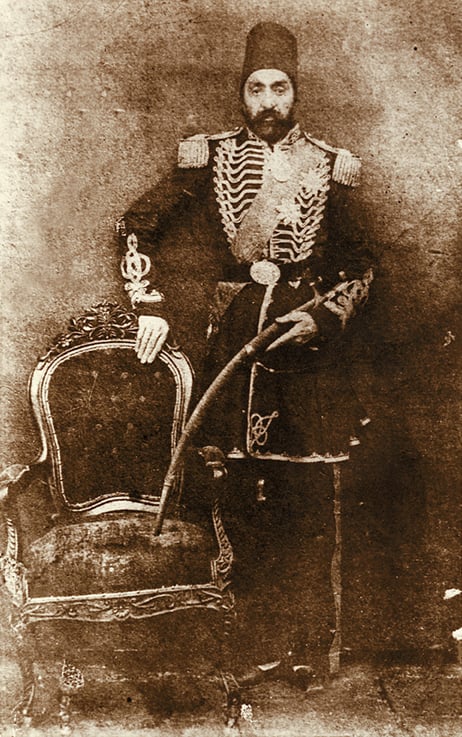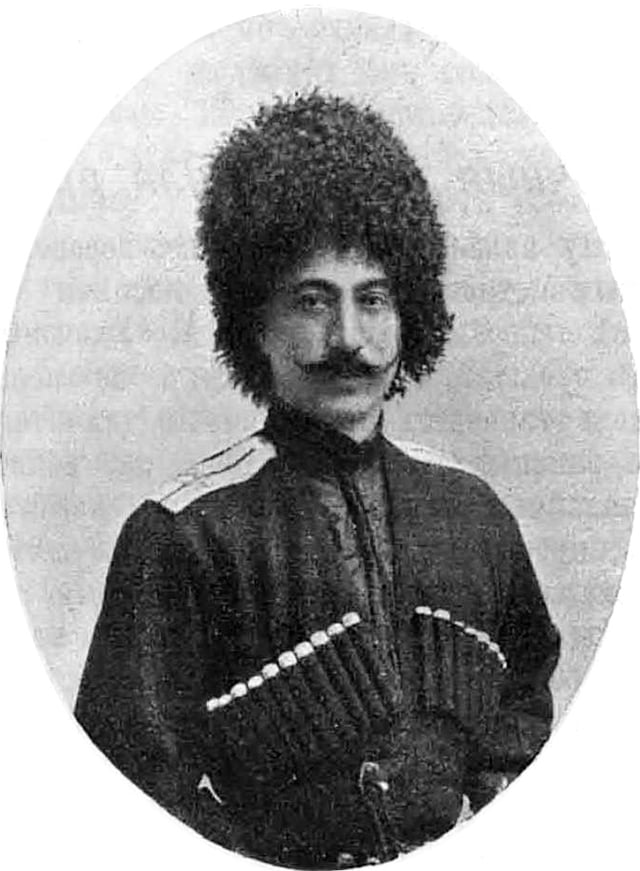Qajar dynasty

Qajar dynasty

| Qajar dynasty | |
|---|---|
| Parent house | Qovanlu line of Qajars tribe |
| Country | Sublime State of Persia |
| Founded | 1796 |
| Founder | Agha Mohammad Shah (1796–1797) |
| Current head | Sultan Mohammad Ali Mirza (since 2011) |
| Final ruler | Ahmad Shah (1909–1925) |
| Titles | Shah of Iran |
| Deposition | 1925 |
The Qajar dynasty (listen ; Persian: سلسله قاجار Selsele-ye Qājār;[1]) was an Iranian[2] royal dynasty of Turkic origin,[3][4][5][6] specifically from the Qajar tribe, ruling over Iran from 1789 to 1925.[7][8] The Qajar family took full control of Iran in 1794, deposing Lotf 'Ali Khan, the last Shah of the Zand dynasty, and re-asserted Iranian sovereignty over large parts of the Caucasus. In 1796, Mohammad Khan Qajar seized Mashhad with ease,[9] putting an end to the Afsharid dynasty, and Mohammad Khan was formally crowned as Shah after his punitive campaign against Iran's Georgian subjects.[10] In the Caucasus, the Qajar dynasty permanently lost many of Iran's integral areas[11] to the Russians over the course of the 19th century, comprising modern-day Georgia, Dagestan, Azerbaijan and Armenia.[12]
| Qajar dynasty | |
|---|---|
| Parent house | Qovanlu line of Qajars tribe |
| Country | Sublime State of Persia |
| Founded | 1796 |
| Founder | Agha Mohammad Shah (1796–1797) |
| Current head | Sultan Mohammad Ali Mirza (since 2011) |
| Final ruler | Ahmad Shah (1909–1925) |
| Titles | Shah of Iran |
| Deposition | 1925 |
Qajar Shahs of Persia, 1796–1925
| Name | Portrait | Title | Born-Died | Entered office | Left office | |
|---|---|---|---|---|---|---|
| 1 | Mohammad Khan Qajar |  | Khan[13] Shah[13] | 1742–1797 | March 1796[14] | 17 June 1797 |
| 2 | Fat′h-Ali Shah Qajar |  | Shahanshah[13] Khaqan[13] | 1772–1834 | 17 June 1797 | 23 October 1834 |
| 3 | Mohammad Shah Qajar |  | Khaqan son of Khaqan[13] | 1808–1848 | 23 October 1834 | 5 September 1848 |
| 4 | Naser al-Din Shah Qajar |  | Zell'ollah (Shadow of God [on earth])[13] Qebleh-ye 'ālam (Pivot of the Universe)[13] Islampanah (Refuge of Islam)[13] | 1831–1896 | 5 September 1848 | 1 May 1896 |
| 5 | Mozaffar ad-Din Shah Qajar |  | 1853–1907 | 1 May 1896 | 3 January 1907 | |
| 6 | Mohammad Ali Shah Qajar |  | 1872–1925 | 3 January 1907 | 16 July 1909 | |
| 7 | Ahmad Shah Qajar |  | Sultan | 1898–1930 | 16 July 1909 | 31 October 1925 |
Qajar imperial family
The Qajar Imperial Family in exile is currently headed by the eldest descendant of Mohammad Ali Shah, Soltan Mohammad Ali Mirza Qajar, while the Heir Presumptive to the Qajar throne is Mohammad Hassan Mirza II, the grandson of Mohammad Hassan Mirza, Soltan Ahmad Shah's brother and heir. Mohammad Hassan Mirza died in England in 1943, having proclaimed himself shah in exile in 1930 after the death of his brother in France.
Today, the descendants of the Qajars often identify themselves as such and hold reunions to stay socially acquainted through the Kadjar (Qajar) Family Association,[15] often coinciding with the annual conferences and meetings of the International Qajar Studies Association (IQSA). The Kadjar (Qajar) Family Association was founded for a third time in 2000. Two earlier family associations were stopped because of political pressure. The offices and archives of IQSA are housed at the International Museum for Family History in Eijsden.
Titles and styles
The shah and his consort were styled Imperial Majesty. Their children were addressed as Imperial Highness, while male-line grandchildren were entitled to the lower style of Highness; all of them bore the title of Shahzadeh or Shahzadeh Khanoum.[16]
Qajar dynasty since 1925
- Heads of the Qajar Imperial Family
The headship of the Imperial Family is inherited by the eldest male descendant of Mohammad Ali Shah.
Sultan Ahmad Shah Qajar (1925–1930)
Fereydoun Mirza (1930–1975)
Sultan Hamid Mirza (1975–1988)
Sultan Mahmoud Mirza (1988)
Sultan Ali Mirza Qajar (1988–2011)
Sultan Mohammad Ali Mirza (2011–present)
- Heirs Presumptive of the Qajar dynasty
The Heir Presumptive is the Qajar heir to the Persian throne.
Sultan Ahmad Shah Qajar (1925–1930)
Mohammad Hassan Mirza (1930–1943)
Fereydoun Mirza (1943–1975)
Sultan Hamid Mirza (1975–1988)
Mohammad Hassan Mirza II (1988–1996)
Shahzade Arian J. Salari I (1986–Present)
Notable members

Bahram Mirza

Feyzullah Mirza Qajar
- Politics
Prince Abdol-Hossein Farmanfarma (1859–1939), prime minister of Iran
Mohammad Mosaddegh, prime minister of Iran and nephew of Prince Abdol Hossein Mirza Farmanfarma.
Prince Firouz Nosrat-ed-Dowleh III (1889–1937), son of Prince Abdol-Hossein Farmanfarma, foreign minister of Iran
Hossein Khan Sardar (1740–1830), last ruler of the Erivan Khanate administrative division
Amir Abbas Hoveyda, Iranian economist and politician, prime minister of Iran from 1965 to 1977, a Qajar descendant on his maternal side
Ali Amini, prime minister of Iran
Prince Iraj Eskandari, Iranian communist politician
Princess Maryam Farman Farmaian (b. 1914–d. 2008) Iranian communist politician, founder of the women's section of the Tudeh Party of Iran
Ardeshir Zahedi (b. 1928–) Iranian diplomat, qajar descendant on his maternal side.
Prince Sabbar Farmanfarmaian, health minister in Mosaddeq cabinet
Abdol-Hossein Sardari (1895–1981), Consul General at the Iranian Embassy in Paris 1940–1945; helped and saved the lives of Jews in danger of deportation by issuing them with Iranian passports. A Qajar Qovanlou and through his mother a grandson of Princess Malekzadeh Khanoum Ezzat od-Doleh, the sister of Nasser ed-Din Shah.
Aga Khan III (1877–1957), President of the League of Nations from 1937-38, one of the founders and the first president of the All-India Muslim League and the 48th Imam of the Nizari Ismaili Muslims.
- Military
Prince Amanullah Mirza Qajar, Imperial Russian, Azerbaijani, and Iranian military commander
Prince Feyzulla Mirza Qajar, Imperial Russian and Azerbaijani (ADR) military commander
Prince Aleksander Reza Qoli Mirza Qajar, Imperial Russian military leader, commander of Yekaterinburg (1918)
Prince Amanullah Jahanbani, senior Iranian general
Nader Jahanbani, general and vice-deputy chief of the Imperial Iranian Air Force
- Social work
Princess Sattareh Farmanfarmaian, Iranian social work pioneer
- Business
Princess Fakhr-ol-dowleh
Religion
Aga Khan IV (1936–), the 49th and current Imam of Nizari Ismailism, a denomination of Isma'ilism within Shia Islam.
- Women's rights
Princess Mohtaram Eskandari, intellectual and pioneering figures in Iranian women's movement.[17]
Dr. Iran Teymourtash (Légion d'honneur) (1914–1991), journalist, editor and publisher of Rastakhiz newspaper, founder of an association for helping destitute women. Daughter of court minister Abdolhossein Teymourtash and through both her maternal grandparents a Qajar.[18]
- Literature
Prince Iraj (1874–1926), Iranian poet and translator
Princess Lobat Vala (b. 1930), Iranian poet and campaigner for the Women Liberation
Shahrnush Parsipur, Iranian novelist, a Qajar descendant on her maternal side
Sadegh Hedayat, a Qajar descendant through the female line
- Entertainment
Gholam-Hossein Banan, Iranian musician and singer, Qajar descendant on his maternal side.[19]
Family tree
Mothers of Qajar Shahs
See also
Qajar Iran
Abdolhossein Teymourtash
Austro-Hungarian Military Mission in Persia
Bahmani family
Khanates of the Caucasus
List of kings of Persia
List of Shi'a Muslims dynasties
Mirza Kouchek Khan
History of the Caucasus
Qajar art